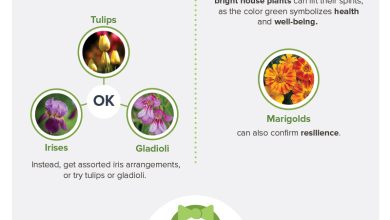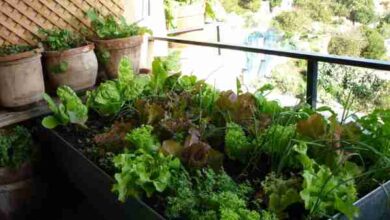Gooseberry: [Characteristics, Cultivation, Care and Disadvantages]
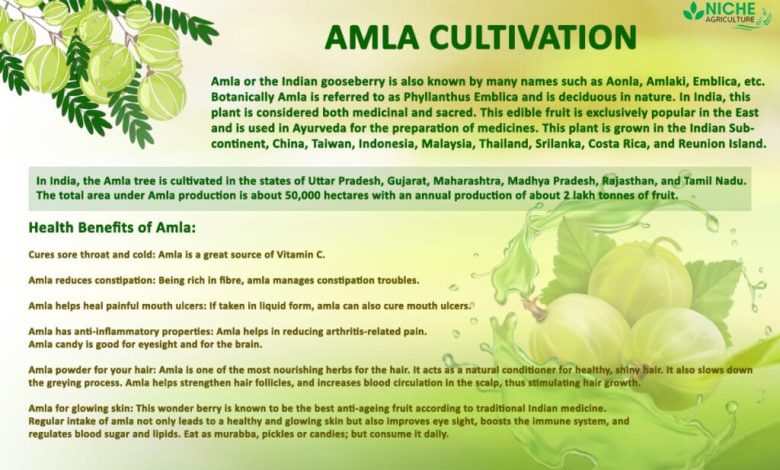
Important points when sowing a Gooseberry:
- When? The gooseberry can be easily reproduced in late autumn, by layering, dividing the plant or cutting both woody and green.
- Where? Gooseberries can be grown in mountainous areas, on rocky sites and even in the midst of weeds.
- How do we water? Drip irrigationand mulching are the most recommended techniques for growing gooseberries.
- How often do we water? Experts and gardeners recommend keeping the currant plant moist, so they recommend programmable watering; short but frequent
- What care does it require? The soil for the cultivation of the currant will depend on the color of its fruits; the red and black ones develop very well in substrates with acid pH while the green and yellow ones prefer neutral.
- What pests and diseases affect you? In general, the pests that affect garden crops also attack currants, causing damage to their stems, leaves and fruits.
What characteristics does the currant have?
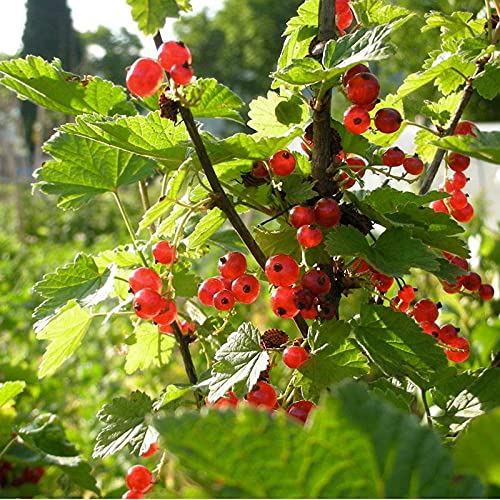 The gooseberry plant is a shrub of the saxifragaceae family, deciduous.
The gooseberry plant is a shrub of the saxifragaceae family, deciduous.
It can reach up to 2 meters in height and produces highly valued fruit.
The roots of the plant are long and like to spread out far into their surroundings. Currant leaves are deciduous, measuring between 5 and 7 cm.
They grow in clusters and are composed of 3-5 leaflets with irregularly toothed edges. The flowers of the plant usually appear grouped in hanging clusters and are reddish green in color.
The fruit of the currant is a round edible berry, red, amber, light yellow, black and translucent green, depending on the variety.
It contains up to 90% water, with a great vitamin content that can exceed that of the orange. With the intake of only 20 currants, the amount of vitamin C that the body requires is reached. The fruits of the gooseberry have an acid taste that seduces and can be grown in summer and autumn.
How is the currant classified according to its color and the properties of its fruits?
- Red currant (Ribes rubrum), produces a very beautiful bright red fruit. It is the most common of all currants and is characterized by its contribution of vitamin C and its antioxidant power.
- Black currant (Ribes nigrum) is highly appreciated in some European countries for its antibiotic and antiseptic properties and is highly recommended in case of urinary infections.
- In Russia and Belgium, red and black currant are harvested throughout the year, being widely used in preserves, in yogurt, in pasteurized juices, dehydrated foods, in jellies and also in liqueurs.
- It is said that the green currant (Ribes silvestrum) can help in cancer prevention, to treat respiratory conditions such as asthma, bronchitis and pneumonia thanks to its pectin content and its antibacterial properties.
- The gooseberry, also known as uva crispa, has tiny thorns on its twigs. It is highly valued for its high iron content and is recommended in cases of anemia.
- The yellow currant has a fruit that is slightly more acidic than that of the red and black currant. It is used to flavor liqueurs and in the preparation of vinegars. It is produced in Asia.
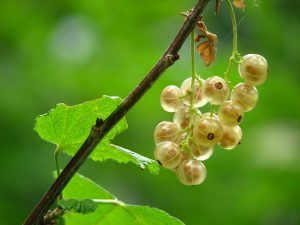 The seeds of the gooseberry are found inside the fruit and can be easily removed and turn a bright red color when ripe.
The seeds of the gooseberry are found inside the fruit and can be easily removed and turn a bright red color when ripe.
It is a plant that can provide a large amount of natural pigments such as tannin and carotenoids responsible for its color and antioxidant action.
It is characterized by having antioxidant effects, slowing down aging and also supplying calcium, potassium, magnesium as well as iron and Vitamin C.
The gooseberry has its origin in Asia, especially Madagascar, from where it came to the East Indies, the Philippines, Indonesia, South Vietnam, Laos, northern Malaysia, India, Guam, Hawaii and other Pacific islands.
It also originated in Europe, an area that is home to the largest gooseberry producers, including Russia, Germany, Poland, the Czech Republic, Belgium and Luxembourg.
When to sow the currant?
The gooseberry can be easily reproduced in late autumn, by layering, dividing the plant or cutting both woody and green. Cuttings should be collected during the fall and planted in late fall.
Where to plant currant?
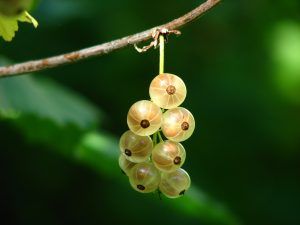 Gooseberries can be grown in mountainous areas, on rocky sites and even in the midst of weeds.
Gooseberries can be grown in mountainous areas, on rocky sites and even in the midst of weeds.
They can be grown very easily as wild berries in lanes and fields, moist places, and deep soil.
How do we water the gooseberry?
Drip irrigation and mulching are the most recommended techniques for growing gooseberries. It is a plant that requires abundant and constant humidity, especially in the hours of greatest sunshine when maximum water evaporation occurs.
How often do we water the currant?
Experts and gardeners recommend keeping the currant plant moist, so they recommend programmable watering; short but frequent
How to sow a gooseberry step by step?
- Select a layer or a cutting from a plant that is older than 3 years.
- Choose a large and wide pot or container to plant the cutting
- Locate one cutting per container because their roots need room to expand.
- Place universal substrate.
- Water abundantly.
- Locate in a cool place, in full sun or shade.
What care does the currant need?
The soil for the cultivation of the currant will depend on the color of its fruits; the red and black ones develop very well in substrates with acidic pH while the green and yellow ones prefer neutral.
Wild currants do not have many requirements regarding the soil and can be grown in all types of substrate, as long as the pH is around 6. The plant prefers moist soils with high concentrations of water.
The location of the currant plant can be in full sun or in semi shade. If it is very hot it should be placed in semi-shade, but if it is very cold then it is necessary to provide a little light for the currant.
They do not easily withstand dry climates, or very windy spaces that could easily damage their branches. They need intense winter cold for a good production of their berries.
They resist temperatures down to -20º C, although it can have problems when it has flowered and frosts arrive late because the plant suffers from the death of the flower and can only withstand -2º C.
The gooseberry needs a good pruning, making severe cuts in old and weak branches to favor the vigorous regrowth of the plant. The gooseberry harvest must be done in summer when its fruits are ripe.
The clusters must be removed and then separated one by one to be used as fresh or processed fruits.
What pests and diseases affect currant?
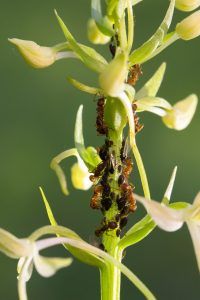 In general, the pests that affect garden crops also attack currants, causing damage to their stems, leaves and fruits.
In general, the pests that affect garden crops also attack currants, causing damage to their stems, leaves and fruits.
Aphids, moths, glassy larvae, mites, and sawflies, among other pests, attack gooseberries.
Among the diseases that usually attack gooseberry crops are: powdery mildew, Anthracnose, Botrytis; in addition to the necrosis of its leaves.
Mildew is a fungus that is easily recognized because it appears as a white powder on the leaves of the plant. It is a serious problem for the currant because both its fruits and its stems and leaves are compromised in its development and growth.
Botrytis directly affects the fruits, covering them with a patina of gray mold and killing them, so it is recommended to remove the dried fruits to avoid this disease.
Anthracnose is a fungus that especially affects the fruits and the currant plant, remaining in the shoots. Marginal necrosis of currant leaves causes complete death of the leaf margins and is caused by excess chlorine in the plant substrate.
To attack the diseases that affect the gooseberry, prevention and care of the plant, with regular pruning, is mainly recommended.
In serious cases, it is preferable to meet the needs of the plant with the support of an expert in the field and with insecticides according to each type of pest or specific disease.
How long does the currant live?
They are fruit trees that reach an average life of 15 years.
How long does it take to grow currant?
It takes 4 years to fully grow after sowing has been carried out correctly.
How long does it take to produce fruit?
It is a plant capable of producing its first harvest 3 years after planting.
Can it be grown in a pot?
Yes, it can be grown in a pot and obtain production from it, you just have to control its growth and ensure enough space for its roots.
How many times does the gooseberry produce fruit?
It can produce between 1 and 2 harvests per year, depending on the conditions generated in the place where it is planted.
Should currant be pollinated to obtain fruit?
It is a species that works with self-pollination, so it does not need the intervention of third-party elements to generate fruit.
How many currants can be planted per hectare?
Due to its dimensions, it is possible to plant more than 3,000 currant specimens per hectare when it is for productive and commercial purposes.
What kind of fertilizer does currant need?
You have to work with balanced organic fertilizers that provide nitrogen, phosphorus and potassium.
In addition, currants have a special requirement for calcium and iron, which will also need to be provided for high-quality harvests.
How much heat and/or drought can currant tolerate?
They are plants of temperate climates, so a summer with temperatures above 29° C will do a lot of damage.
It is resistant to drought.
Bibliographic references
- Determination of the chemical, physical and organoleptic characteristics of the currant fruit (Phyllanthus acidus L.), A Burgos, G Padilla, GSA Paternina – Agrarian Themes, 2007 – revista.unicordoba.edu.co
- Main aspects of the cultivation of blueberries, sarsaparillas and currants, J Ballington – Course Production, Industrialization and Markets for …, 1988 – sidalc.net
- Currants, cassis and corinth, The new fruits of the forest, R PILDO – Acaecer, 1994 – sidalc.net
- Trees of the Central Valley of Costa Rica: Gooseberry reproduction (Phyllanthus acidus (L.) Skeels), F Rojas-Rodríguez, G Torres-Córdoba – … Forestal Mesoamericana Kurú, 2018 – scielo.sa.cr
- Raspberries, blackberries and currants, I Bruzzone – Argentine Food, 2009 – sidalc.net
- Blackcurrants, the queens of vitamin C, R Barasoain – Fertility of the land: agricultural magazine…, 2010 – dialnet.unirioja.es
- Organic Garden and Orchard, ML Kreuter – 2005 – books.google.com

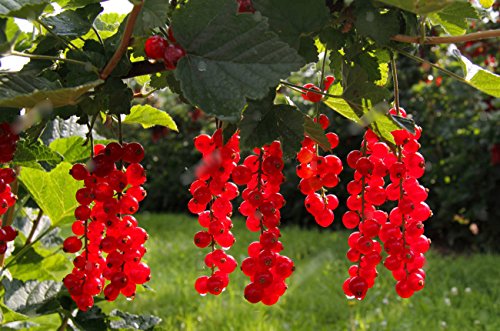
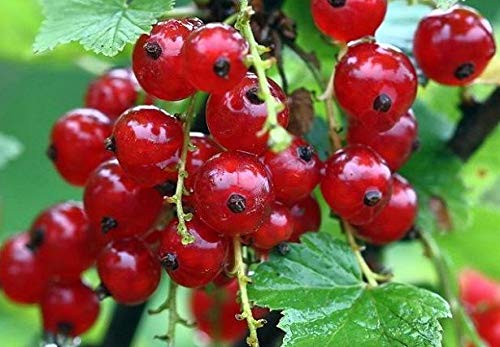
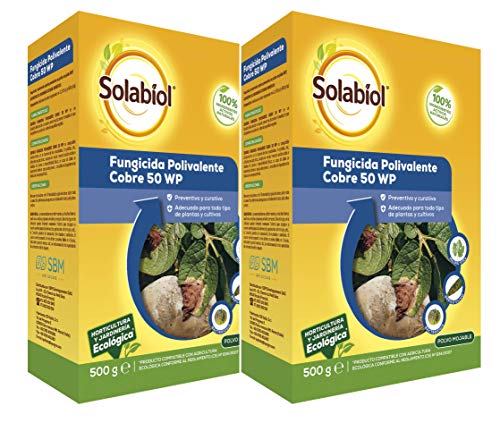
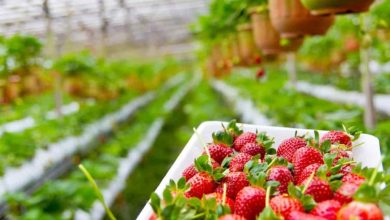
![Photo of How to Sow the Money Plant: [Method, Care and Complete Guide]](https://www.complete-gardening.com/wp-content/uploads/2021/06/cómo-sembrar-la-planta-del-dinero-390x220.jpg)
